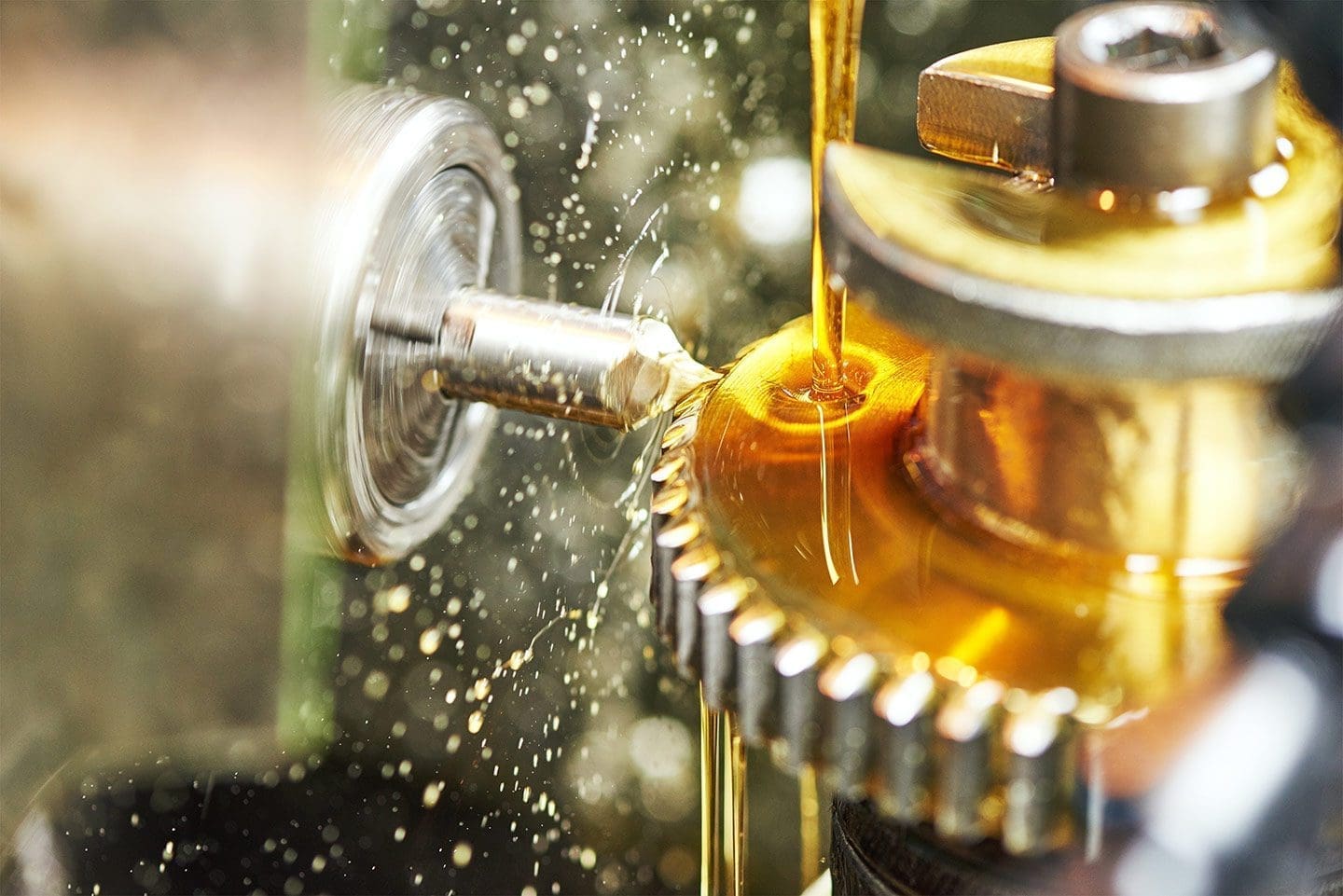
Nothing can be more frustrating to a machinist than premature tool wear. This not only costs money in tooling, it results in longer job times and often higher scrap. It’s easy to blame the tool, but is it really the tool’s fault? Many times it’s not.
“Most times, when part quality is in question, there is really some underlying issue with a machining fluid that can be determined through lab analysis,” says Lube-Tech Industrial Manager Luke Bame. “The solution can be as simple as improved filtration, concentration maintenance, contamination reduction, or in some cases the job may require a different or custom fluid.”
Snap Shot Fluid Analysis
A snap shot fluid analysis can determine most issues relatively quickly. Here’s what the Lube-Tech laboratory will typically look at when determining if the proper fluid is being used for the application:
Viscosity: Wrong viscosity could cause insufficient cooling at the tool/workpiece interface. The machine operator may have to compensate with slower speeds and feeds than desired. Additionally, there may be a contaminant in the system that is shifting the viscosity, diluting the additive package – or worse – adding something that may be detrimental to part finish.
Metals Content: Too high a metal particle content in the fluid can creating a corrosive environment. Unfiltered particulate can have an effect on surface finish and cause premature tool wear.
Additive Content: Dilution of the additive package may be an indication of “using up” the lubricity components. In some cases a spike oil is needed to keep the fluid operating at its optimum level. Checking additive content may also reveal any contaminants in the system.
Water Level/Emulsion Quality: Is there water in your straight cutting fluid? Is your emulsion stable and not separating?
Concentration: With a water-based fluid this is the number one cause for ALL issues related to fluid longevity and performance. Sometimes refractometer values taken on site can shift with contamination in the sump (ie tramp oils, metals, hard water, etc.) which cause a false high reading. The laboratory has other titration methods to validate the concentration without relying on dissolved solid readings.
Solving The Issue
A fluid analysis doesn’t necessarily mean opening the door to an expensive custom formula, or massive changes to operating procedures. As outlined above, a fluid analysis can reveal a large problem or, as is often the case, a simple, easily-solved one. Here are some solutions that can be implemented after fluid problems are revealed:
Filtration: clean filters, and the proper filter for the application, are important. One current trend is advanced microfiltration which helps keep sumps clean and free of contaminants.
Contamination reduction: Once a contaminant is identified, reducing the amount of the contaminant or, better yet, eliminating it, will solve the problem.
Better concentration maintenance: It is important that a fluid put in a machine stays the same throughout its lifespan. Lost viscosity, contaminants, dilution and other factors can “change” a fluid into one that is not suited for use in the job for which it was intended.
Spike Oil: In some cases a carefully-engineered amount of oil or additive can cure fluid problems or add to fluid longevity.
 Long-Term Fluid Monitoring
Long-Term Fluid Monitoring
Once a solution has been found and implemented, it is important to track progress to make sure the problem does not rear its head again. Trended Fluid Analysis allows us to set a baseline for a fluid. No one thinks to test their fluid when all things are going well, but this is extremely important! Routine fluid analysis allows benchmarking and limit setting before there is a problem. Other things Trended Fluid Analysis consists of include:
• Keeping a historical trend of your fluid’s condition
• Allowing minimums and maximums to be set for different test parameters
• Indicating when a spike oil is needed
• Indicate when filters are not working
• Throw a red flag when concentration methods (refractometer readings) are no longer reliable
Ongoing Support
Machining fluid is a vital part of the machining process. When dealing with tooling issues, it is important to examine the fluid when trying to determine any problems. The ability to call a human being and not simply dial a tech help line is key. Partnering with a knowledgeable, experienced fluid supplier such as Lube-Tech can pay dividends down the road, increasing production, lowering costs and accelerating performance!
 Long-Term Fluid Monitoring
Long-Term Fluid Monitoring